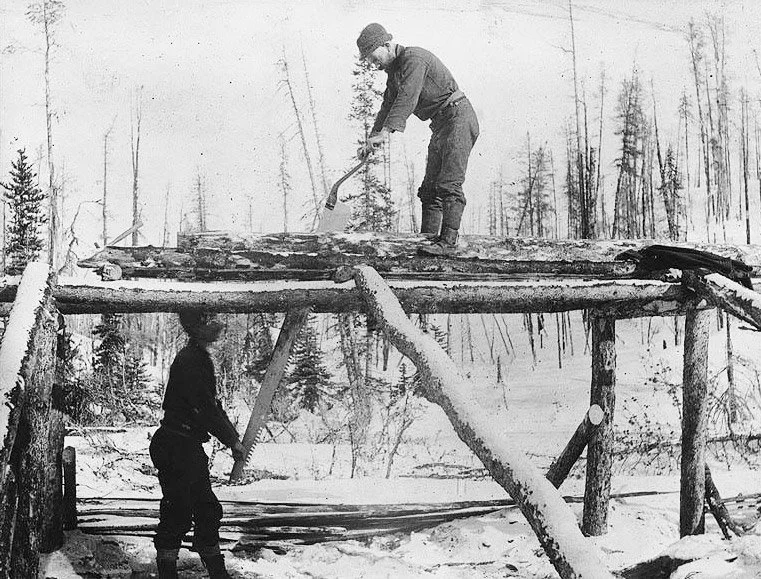The European immigrants who settled New England in the 17th and 18th centuries converted virgin forests to houses and towns and cities with astonishing efficiency. Lacking power tools and milled lumber, they built a civilization with tools like barking irons, draw knives and broadaxes.
C. Keith Wilbur, the author of several books on early American life, has compiled a sourcebook of the tools and technologies of Colonial carpentry. From timber felling and mortising to sawing clapboards and laying floors, Homebuilding and Wood Working in Colonial America describes each step in the construction of a house with words and line drawings. Even specifics on concocting lime plaster and the evolution of stairmaking are included.
What I find most intriguing, though, are the tools -- what they looked like, what their purpose was and how they were used. Like the homes they helped build, many have vanished into obsolesence. Others evolved into some modern-day implement.
Pit Saw. Colonists cut logs lengthwise into boards with a tool invented in the 15th century. The "pit saw" was a long two-man broad-bladed saw held taut in a rectangular wooden framework. With the log propped on a six-foot pit sill, a sawyer stood on top of the log and pushed down on the pit saw. A "pitman" below him would push up on the return stroke, his face undoubtedly littered with sawdust.
Froe. Those wooden pegs, or treenails, that locked joints together on an all-wood framework, were split off from a foot-long piece of hardwood with a "froe." This L-shaped cleaving tool had a blade along one face that was pounded into the wood with a maul. A handle held at a right angle to the blade was used as a lever, pushing and pulling the blade "to and froe" to widen the split in the wood. First, 1-inch thick slabs were separated from a log. Then, 1-inch-square sticks were split from the slab. Tapered at one end, the sticks made admirable joint nails.
Twisted Cylinder Auger. Water supplies were sometimes piped into colonial homes through hollowed-out logs, or "pump logs." The twisted cyclinder auger was used to bore a passageway through 8 to 16 foot long logs. With a green log propped up at about chest level, the carpenter would position the auger point at the center of the log and turn it with a T-shaped handle from several feet away. As the spiral-shaped bit of the auger bore deep into the log it often took two strong men to turn the cyclinder and move the auger forward.
Despite their lack of modern technologies, Colonial builders created structures that could withstand decades, or even centuries, of wear and weather. Wooden pegs and boards and pump logs from three centuries ago still survive today. Superior craftsmanship usually prevails, whatever the time or place
Homebuilding and Wood Working in Colonial America: An Illustrated Source Book of Practical Techniques Used by the Colonists, by C. Keith Wilbur.



